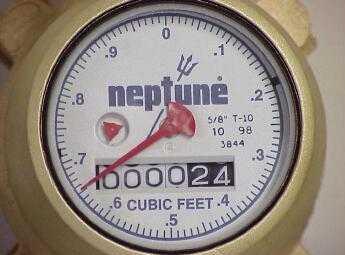 If your water bills seem high, or you are concerned that you may have a plumbing or water leak, there is a simple test you can perform that tells all. It’s called the water meter test. Because water leaks often go undetected, performing this test annually at a minimum is recommended. It is important to note that almost anyone can perform this test. You don’t have to be an plumbing expert or have fancy diagnostic equipment—just eyes and common sense.
If your water bills seem high, or you are concerned that you may have a plumbing or water leak, there is a simple test you can perform that tells all. It’s called the water meter test. Because water leaks often go undetected, performing this test annually at a minimum is recommended. It is important to note that almost anyone can perform this test. You don’t have to be an plumbing expert or have fancy diagnostic equipment—just eyes and common sense.
Step 1: Turn Off All Fixtures & Appliances
Be sure to turn the water off at all water or plumbing fixtures. If you are watering plants, washing clothes, or the pool equipment is running, the test may not be accurate.
Step 2: Locate the Water Meter
Water meters are usually in the front of the property or in the back if an alley is present. Most new meters are in the front near the sidewalk or curb. The meter will be in a concrete or plastic box with a lid or metal disc. Remove the meter box lid and find the face of the water meter.
Step 3: Confirm You Have Located Your Meter
There are often two meters inside a water meter box. Yours should be the one closest to your house (the other is your neighbor’s). If you’re not sure which is which, turn on a faucet at your house. If you see the dial moving you’ve found your meter.
Step 4: Locate the Sensitive Hand on the Dial
Most water meters have two hands on the dial: one large hand similar to a clock, and a second smaller hand, wheel or triangle that may be red, black or silver. This small hand, also known as the sensitive dial, is the one we will be monitoring.
Step 5: Monitor the Sensitive Dial
Watch this dial like a hawk for a good 5 minutes. If this smaller hand or dial is showing any movement at all, a leak may exist. The most common sources of water leaks are: toilets (especially toilet flappers), dripping exterior hose bibs, dripping fixtures, and lawn irrigation systems. Worse case scenarios can include sub slab leaks due to foundation movement, leaks in walls at plumbing joints or connections, and leaking water heaters.
In Austin, about 10% of our treated water is lost due to undetected leaks.
